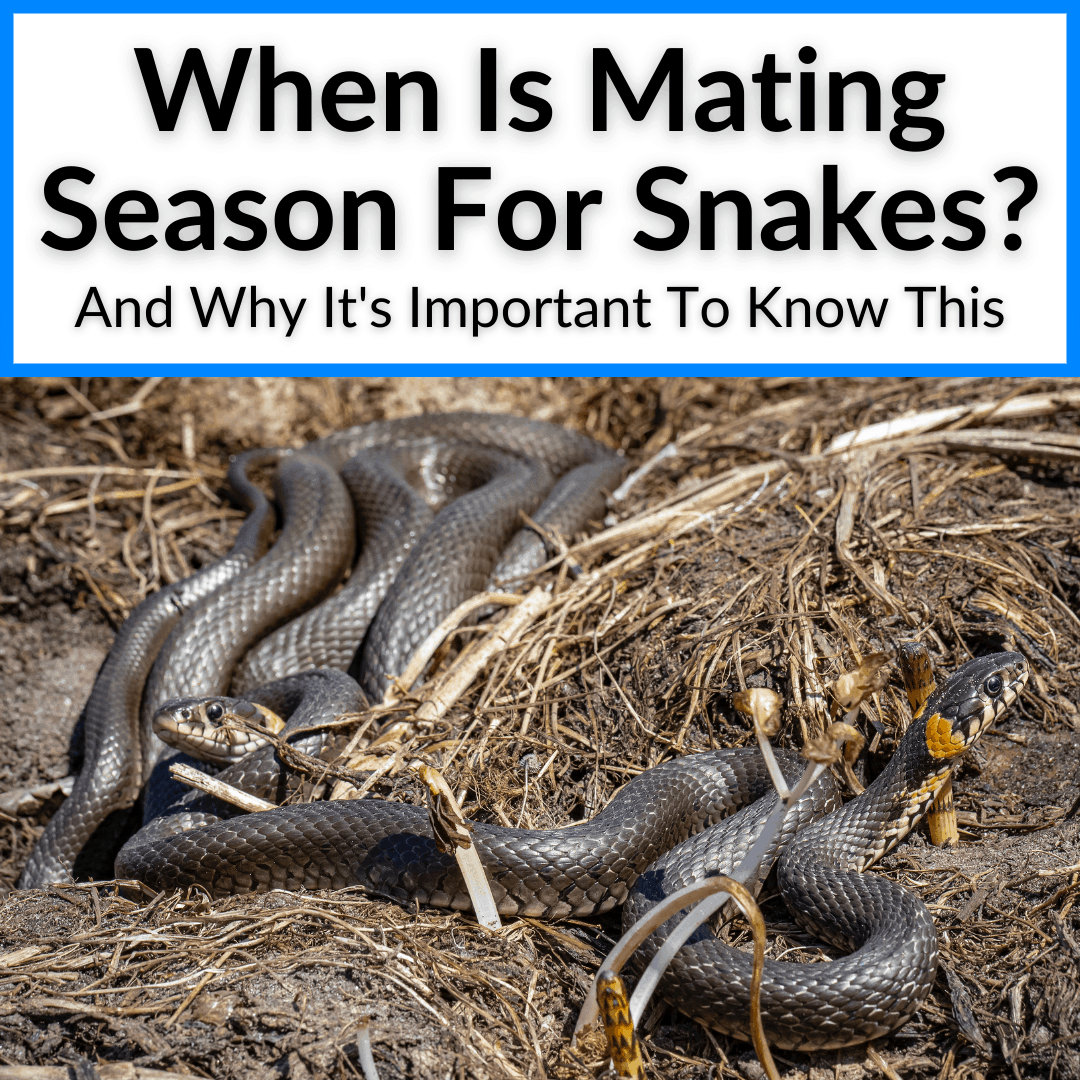
Then it is a good idea to know when mating season for snakes is.
Why do you want to know this?
Because snakes tend to become much more aggressive when they are on the hunt for a mate.
This means a higher likelihood of a snake striking at you, when it would otherwise run away and hide.
So keep reading, to learn when snakes have their mating season, plus some other important facts on the subject.
Table of Contents
When Is Mating Season For Snakes?
There are many species of snakes with different mating habits. There is no single mating season for all snakes.
When a species tends to mate depends on a number of factors. Geography is one of the biggest. That said, the most common mating season for snakes is just after spring has ended and well into the summer.
Snake Mating Seasons By Climate & Species
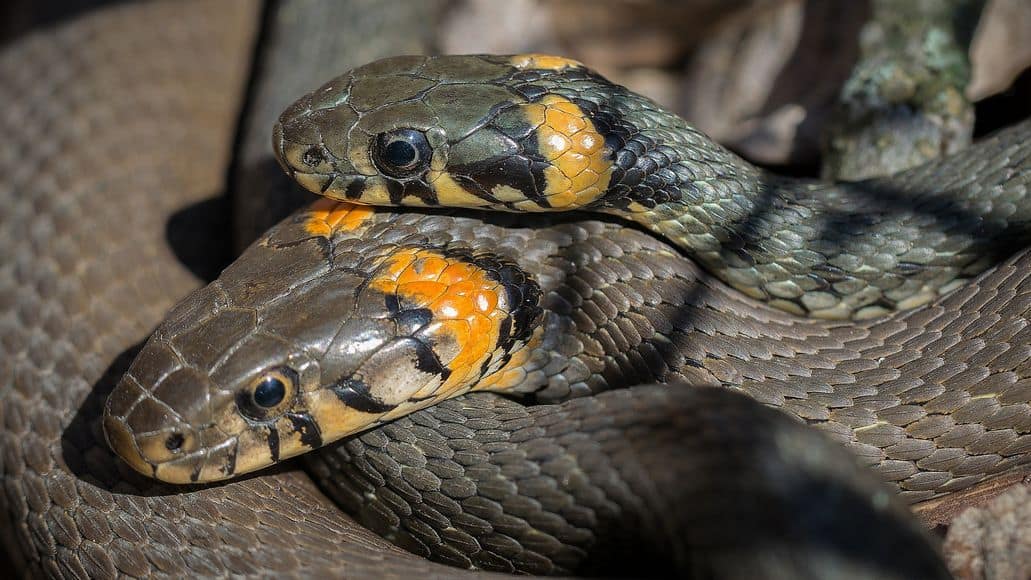
As mentioned, the reason everyone is so interested in when mating season is for snakes is that during this time snakes become more aggressive, due to their instinct to find a mate.
If you know when the snakes in your area mate, you know when you need to be extra careful when out in the wild.
Snakes have different mating habits depending on the species and where they live. Because there are so many varieties of snakes, it would be impossible to cover each one.
Of course, there are some popular snakes that everybody knows about and I will cover those here.
Desert Southwest
Places like Arizona and New Mexico have some of the most well-known snakes. The climate is brutal in the summer and can get very cold in the high desert in the wintertime as well. In this climate, snakes have specific breeding habits due to climate constraints.
Western Diamondback Rattlesnakes
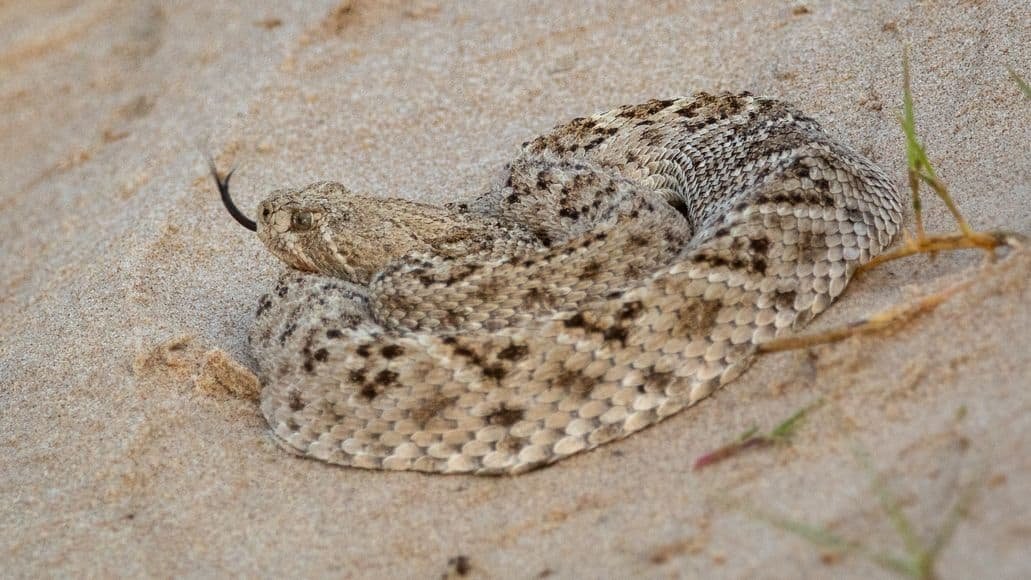
The Western Diamondback hibernates during the brutally cold winters in Arizona and New Mexico. When the snakes come out of hibernation in the spring, they go looking for a mate.
Once they successfully mate, the female snake will be pregnant for about 167 days. One female can produce between 10 and 20 offspring.
Sidewinder
These snakes also mate in the spring when they come out of hibernation and the weather warms up. Some sidewinders have been found to mate again in the fall as well. A sidewinder will have up to 20 babies.
Sonoran Gopher snake
Sonoran Gopher snakes mate a bit later in the year, peaking in July. They can lay up to 24 eggs. These are very promiscuous snakes, mating with multiple partners between June and August. They lay their eggs in underground burrows which they make themselves.
Red Racer
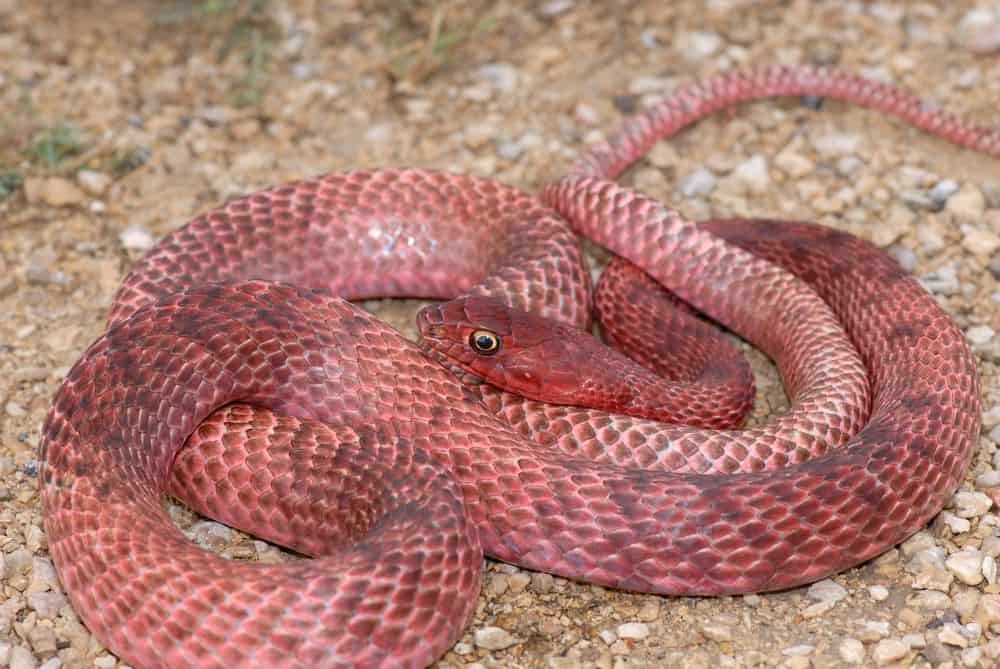
Red racers are also called Coachwhip snakes. They are non-venomous, but a bite can still hurt and draw blood. They mate in spring and lay eggs in summer. The clutch can range from 4 to 20 eggs. It takes between 45 and 70 days for the eggs to hatch.
Pacific Northwest
There are not many venomous snakes in this region of the country, but there are lots of snakes that can bite and cause a real problem if you get bit. Because of the vast number of trails and places in the vegetation for snakes to be hiding, you need to be extra careful.
Western Rattlesnake
The Western Rattlesnake of the northwest breeds in spring and early summer. It becomes increasingly agitated during this time. It will have between 10 and 20 young which appear in late summer to early fall.
This snake is not very common in Washington state and is only ever seen in the eastern part of the state. The snake is more plentiful in western Oregon, in the Klamath Mountains and the Umpqua valley.
Garter Snake
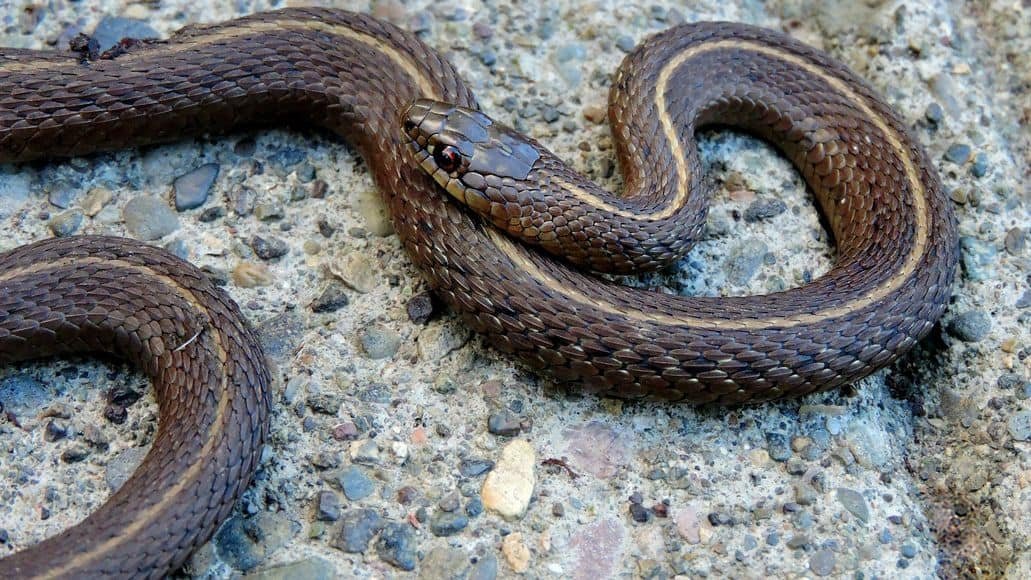
Garter snakes look for their mating partners shortly after they come out of their burrows after hibernation, which occurs in early spring. They are not venomous but can cause a painful bite.
Unlike many snakes, the garter snake will birth live young with the eggs retained in the body until it is time to hatch. Babies are born from July until the end of September.
Bull Snake
Bull snakes are known to mate in March or April in climates that have cold winters. Since this snake can be found in many different parts of the USA, they have different mating seasons. In the northwestern USA, it gets cold in the winter and the snake hibernates.
Much like the other snakes of this region, the bull snake looks for a mate when it comes out of hibernation. Usually, the bull snake will lay 12 eggs, which is similar to the fox snake.
Gopher Snake
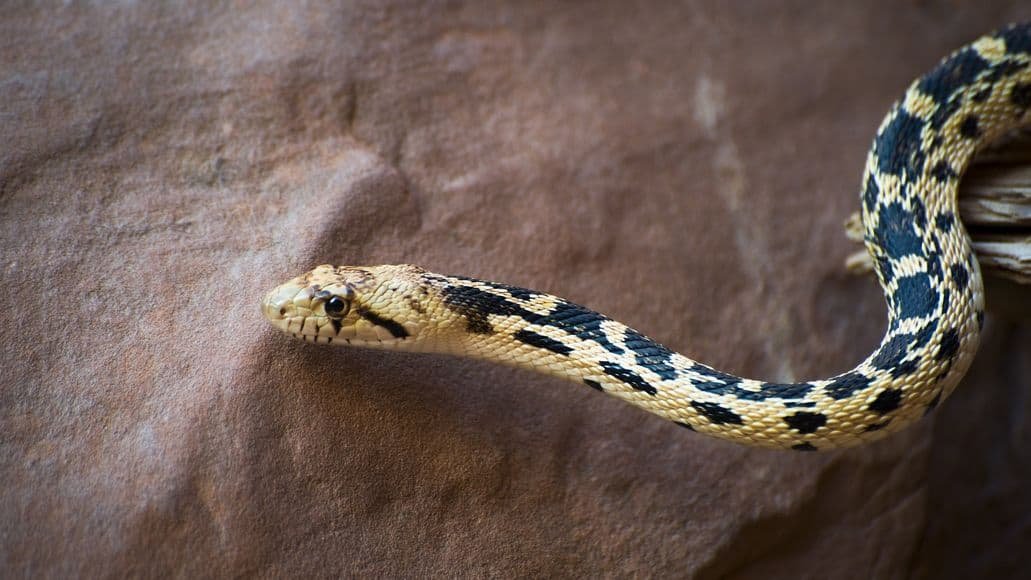
These snakes breed a bit later in the year when compared to bull snakes or other snakes of this region. Gopher snakes breed in June through August in this part of the country.
The weather needs to be warm enough for them to be in the mood. Although these snakes only breed once per year, a female may have 2 different clutches.
Northern United States
The northern United States does not have too many venomous snakes. The only one you need to be concerned with is the Timber Rattlesnake, and even those are extremely rare to come across. Because the winters are so intense you will only see snakes in the spring and summer.
Timber Rattlesnake
The Timber Rattlesnake breeds later in the year in this part of the country. It is extremely cold and since reptiles are cold-blooded, they are unable to function when it is freezing. They mate from mid-July all the way to late in October.
There are not many of these snakes in much of the northern states, but in the more remote areas, they can be found under logs and near other wildlife. If you come across one during mating season be sure to keep your distance.
Rat Snake
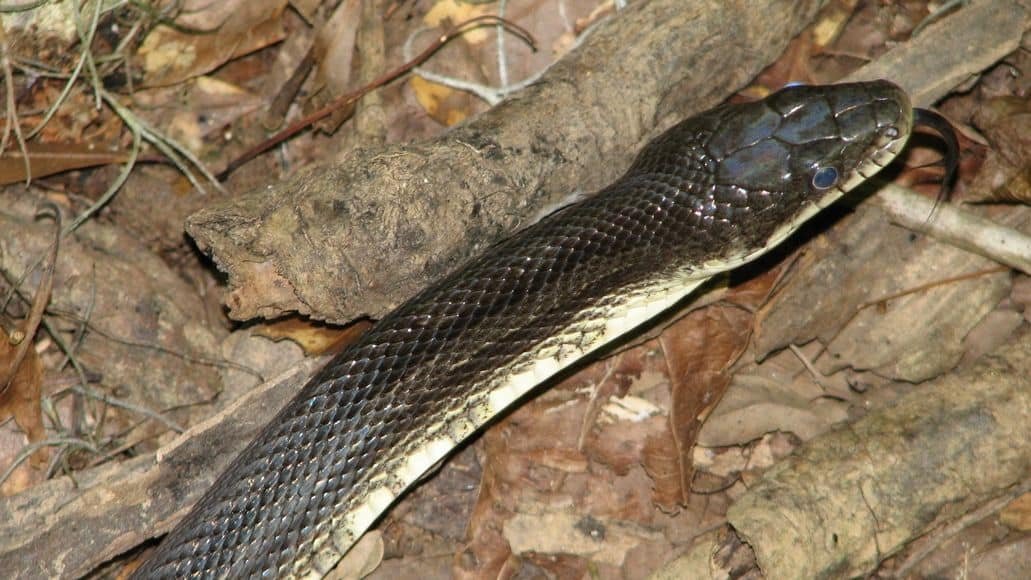
The rat snake will mate from early May to late June. Male rat snakes have been known to fight with one another to gain the right to mate with nearby females.
These are not venomous snakes, but they do have small sharp teeth that can hurt a bit. They can be confused with copperhead snakes which are venomous, so make sure you stay away just in case.
Learn how to identify a baby copperhead snake in this article.
Milksnake
Milk snakes typically mate from mid-March to May. There are several subspecies of milk snake but most of them fall within this general parameter.
They mate when they come out of brumation, however, some milk snakes have been found to mate while still in their dens.
They are not venomous, but they can be mistaken for coral snakes since they have red and white rings around their bodies. It is best to stay clear and let them go on their way, especially during their mating season when they are extra protective.
Snake Mating Season: Final Thoughts
While most snakes mate in spring or summer, the actual mating season differs considerably from one species to the next. It depends in large part on the geographic location the snake calls home.
In general, the warmer the climate, the earlier in the year snakes in the area mate. But this does not always hold true.
We’ve given you the mating seasons for some common snakes around the US, but we strongly recommend doing more research on snakes in your specific area, if you plan on spending time in the outdoors. and there are dangerous snakes in your area.
Leave a Reply